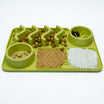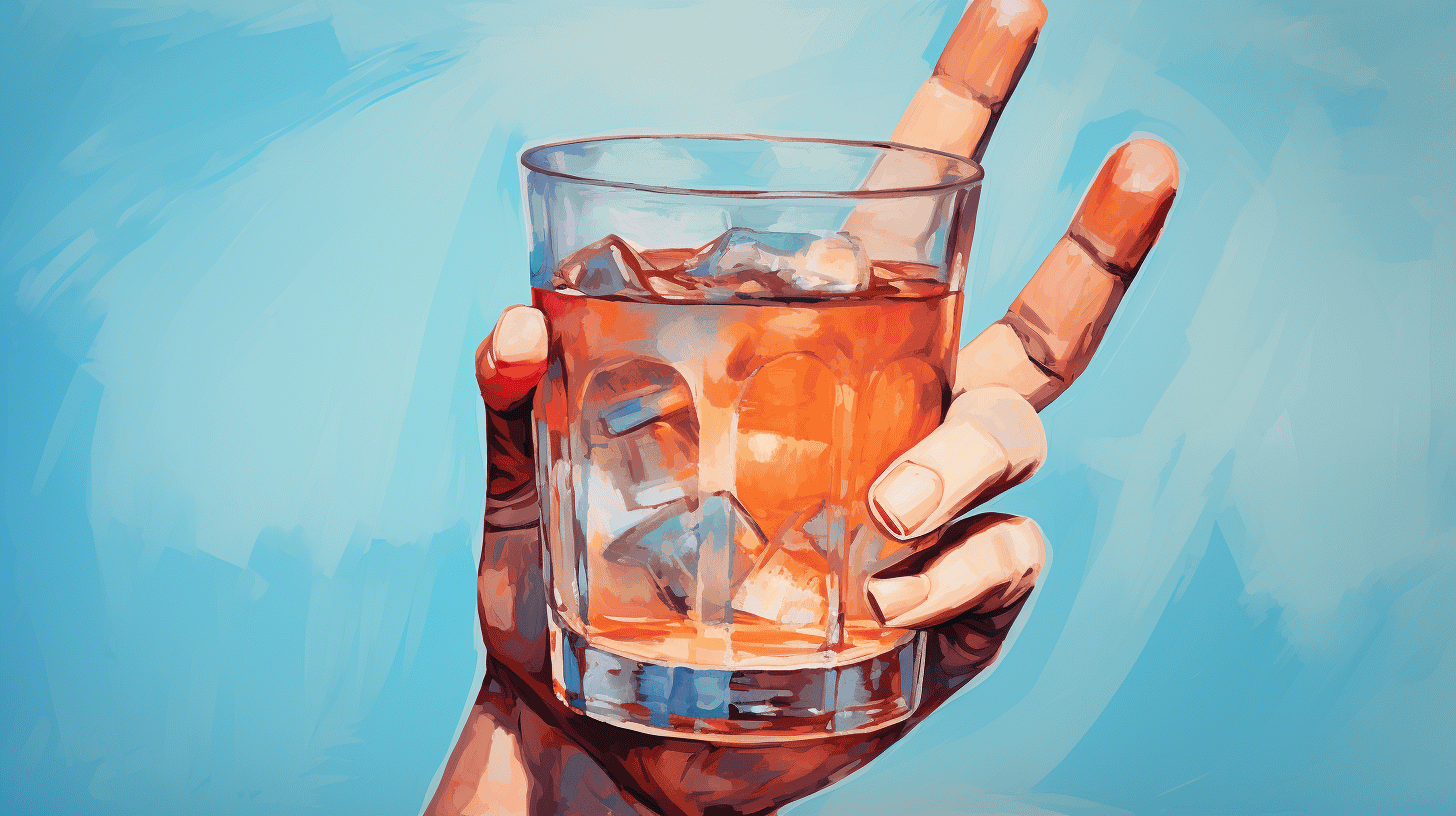Welcome aboard, dear reader! In our quest to ensure everyone enjoys their social outings undisturbed, we’ve put together a comprehensive guide tackling an unfortunate reality that occurs more often than we'd like to admit - drink spiking. This clandestine act, often associated with predatory behaviour, can turn a night of fun into a terrifying experience. In this article, we'll take a deep dive into understanding drink spiking, explore global and regional statistics, discuss the challenges with reporting and prosecution, and finally, share some safety measures to combat this crime.
Our aim is to empower you, the reader, with knowledge and guidance because your safety should never be compromised. So, let's set sail on this voyage of learning together.
Understanding Drink Spiking
Every day, people enjoy meals and drinks amid the company of friends, family, or even strangers. It's everyday moments like these, filled with laughter and stories, that make life truly spectacular. But, what if someone told you that these moments could instantly turn from joyous to dangerous? Well, that's exactly the case with drink spiking, a surreptitious act that poses a grave threat to personal safety.
There is a broad spectrum of substances used in drink spiking, each with unique effects and dangers. We aim to reveal the depth of this issue and aid our community in understanding the potential threats they could encounter. That's why we've put together a comprehensive guide on the types of substances commonly employed in this insidious act.
Types of Spiking
Firstly, let's touch base on alcohol augmentation. This is where an individual's drink is secretly filled with more alcohol than they comprehend. The victim might believe they are only consuming a light cocktail while, in actuality, they are ingesting a potent mix. This form of spiking is common since alcohol is readily accessible and its effects are universally known.
Another prevalent type of drink spiking involves the use of drugs. The substances most frequently used include Rohypnol, GHB, and Ketamine. Each of these substances boasts a formidable potency, and when combined with alcohol, the effects are exacerbated.
Now you might be wondering, why would someone spike a drink? The motives vary widely, spanning from practical jokes to more sinister intentions such as robbery or assault. However, no rationale can justify spiking a drink. It's illegal, unethical, and can lead to severe health issues, if not worse.
It's critical to grasp that drink spiking isn't confined solely to beverages. In a survey, 64% of men reported having an alcoholic drink spiked, while 28% had their food spiked. Contrary to public belief, this isn't an issue solely for women. Men are targeted nearly as often, further emphasizing the paramount importance of understanding and preventing drink spiking.
For more in-depth information pertaining to this growing issue, feel free to head over to our article on Understanding Drink Spiking. Our aim is to create a community that's not only aware and knowledgeable but also empowered to take necessary precautions. So, let's band together for a safer future, because personal safety isn't negotiable, it's a right everyone is entitled to.
Statistics on Drink Spiking Incidents
If you've ever wondered how big of a problem drink spiking really is, you're not alone. It's a shocking issue that plagues many unsuspecting individuals worldwide every year. This hopefully will bring to light the raw and sobering facts about the prolification of such incidents globally, focusing especially on regions like Boston and New South Wales.
Global Overview
Drink spiking isn't merely an issue confined to a single region or country; it's a global problem that requires worldwide attention. A staggering 6,732 reports of drink spiking were recorded in the year ending April 2023 alone, a chilling testament to the pervasiveness of the problem. What's scarier, however, is the increasing prevalence of 'needle spiking' - with 957 cases being identified in the same period. This new unsettling trend of needle spiking just goes to reflect that we need more urgent, concerted efforts to address drink spiking globally.
Boston Drink Spiking Statistics
Zooming into Boston, the picture isn't much brighter. In the first six months of 2023 alone, a disturbing 47 reports of drink spiking were received by the Boston Police Department. It's sobering to realize that these are just the reported incidents. Many, probably most, cases probably go unreported due to the victims' fears or lack of awareness.
New South Wales (NSW) Drink Spiking Incidents
Down under, the situation in New South Wales, Australia, presents another alarming facet of the problem. The NSW Bureau of Crime Statistics and Research noted a significant uptick in drink spiking incidents. In 2022, there were 219 recorded instances, a noticeable increase from 154 in 2021. The trend didn't stabilize the following year either; from July 2022 to June 2023, 220 drink spiking incidents were reported. These figures underline that drink spiking is not merely a one-off issue but an ongoing problem that's growing within the society.
These statistics underscore the startling reality of the drink spiking issue. It's a clear sign that more preventative measures, stringent laws, and awareness campaigns are needed to curb this menace. It's our responsibility collectively to create a safer, caring environment for all. Let's all stand alert and guard against such incidents, ensuring nothing but good times when we clink our glasses together!
Decline in Reporting and Prosecution
As we delve into the alarming issue of drink spiking, one of the first glaring statistics we encounter is the lack of reporting. This issue seems to be at the root of the crisis, making it incredibly hard to assess the extent of the problem accurately. According to notable data, over 90% of people who suspected their drink was spiked did not report the incident at all, neither to the hospital nor the police or any other authority.
Lack of Reporting
- Why is there so much reluctance in reporting such a serious crime?
- What impedes victims from stepping forward and getting the justice they deserve?
Many victims feel embarrassed, mixed feelings of guilt and shame cloaked in fear. There's also the disheartening disbelief faced from skeptics that pour cold water on their attempts to seek justice. For the few who muster the courage to report, their claims are often dismissed due to lack of physical evidence, which dissuades others from coming forward.
"The strength of a society is measured by how it treats its weakest members."
Our society has a long way to go in creating an environment where victims feel safe enough to report such incidents confidently. We need to foster a culture of empathetic listening, where victims aren't blamed or stigmatized, but supported wholeheartedly.
Fall in Prosecution Rates
As if the lack of reporting wasn't disheartening enough, there's been a shocking fall in prosecution rates too. In 2018, roughly one in every 25 reported cases of drink spiking would result in prosecution. Fast forward to 2022, this statistic fell drastically to about one in every 400 reported cases.
These figures show a disturbing trend:
- Fear of reporting increases
- Reported cases decrease
- Prosecution rates plummet
This not only fails our victims who take the courageous step of reporting but also inadvertently provides a safety net for the perpetrators, allowing them to escape the arm of the law.
The root of the issue lies within the system, the attitudes, and the rigorous demands for evidence. The need for a cultural shift is apparent, one where victims are heard, believed, and supported. As we sit on this precipice of a significant societal shift, let's remember that change begins with us; let's become the advocates for victims rather than doubters. Let's insist on justice being served, no matter how slick the crime may be.
Just as the saying goes, true justice does not discriminate; it accounts for the weak, the strong, the visible, the invisible, and yes, the silent victims of drink spiking.
Preventive Measures Against Drink Spiking
When it comes to enjoying a night out, safety should always be at the forefront of our minds. One prevalent safety concern that often gets less attention than it deserves is drink spiking, the malicious act of adding a substance to another person's drink without their consent. No one should have to experience such a violation, and armed with a few solid preventive measures, we can all take the reins of our safety and keep unwelcome surprises at bay.
Awareness and vigilance are our first line of defense. Being aware of our surroundings and the people in it can often help us spot unusual behavior that might signal a potential drink-spiking attempt.
- Be alert and watchful.
- Keep an eye on your drink.
- Protect your drinks from being tampered with.
- Even if you trust those around you, don't share drinks.
Staying protective of our drinks is another critical factor in preventing drink spiking. It is essential to keep our drinks with us and watch them being poured whenever possible.
Sticks and straws can serve as entry points for a spiking substance, so it's a good idea to forgo them as much as possible. We should also avoid accepting drinks from strangers or people we don't trust.
It pays to stay clear of unfamiliar drinks, and if we ever sense that something is off about our beverage, we should stop drinking it immediately. Signs to watch for are
- a strange taste,
- excessive fizzing, or
- unexplained residue.
Lastly, we always have the power to decline a drink. Trusting our intuition and putting our safety first is a sign of empowerment, not weakness.
Preventing drink spiking isn't about inducing fear or mistrust; instead, it's about nurturing a mindset of preparedness and equipping ourselves with the necessary tools to enjoy our life confidently and safely. By employing these solid preventive measures, we can effectively reduce the risk of drink spiking and ensure our nights out are filled with joy and memorable experiences, not regret and danger.
For more extensive insight into this subject, refer to our detailed article on preventing drink spiking. It contains a wealth of knowledge, including essential safety tips that can further enhance our defenses against this illegal act. Remember, the control of our safety is primarily in our hands, and knowledge is our ultimate power to exercise it. So equip yourself with it, and let's promise ourselves safer nights out, free of fears and filled with genuine laughter and healthy interactions.
Conclusion
Safe socializing should be a right, not a privilege. Keeping vigilant and adopting preventative measures can significantly reduce potential risks. There's no perfect solution, but every step you take counts towards improving your personal safety.
We've discussed the global scope of drink spiking, its reporting and prosecution rates, and offered some practical measures to counter it. However, there's no single foolproof method to prevent such incidents. Just as important as these steps is the need for a fundamental social shift that calls drink spiking out for the crime it is and creates an environment where everyone can enjoy themselves without fear.
Empowered by Ashley is on a mission to contribute to this social change and offer practical tools in the process. One of these is our unique drink cover scrunchie, a stylish and straightforward accessory that provides an extra layer of protection when socializing. Our brand's vision is not just to help individuals stay safe but to empower them in their daily lives.
Remember that safeguarding yourself and your drinks shouldn't be seen as a burden but rather as empowering. Because you have every right to protect yourself and, most importantly, to enjoy your social life without anxiety. After all, isn't feeling safe and empowered the cocktail we all should be sipping? Check out our diverse range of personal safety products at Empowered by Ashley. Let's foster a safe, respectful, and enjoyable social atmosphere together. Because consent, respect, and safety should never be optional.
Frequently Asked Questions
-
What is drink spiking?
Drink spiking is the act of adding substances, such as drugs or alcohol, to someone's drink without their knowledge or consent.
-
What are the common substances used for drink spiking?
Common substances used for drink spiking include drugs like GHB, Rohypnol, or ketamine, as well as excessive amounts of alcohol.
-
How can I protect myself from drink spiking?
To protect yourself from drink spiking, it is important to never leave your drink unattended, avoid accepting drinks from strangers, open your own beverages, and be cautious of unusual tastes or smells.
-
What are some common signs of drink spiking?
Common signs of drink spiking include feeling dizzy or disoriented, loss of coordination, excessive sleepiness, memory loss, or feeling unusually drunk after consuming only a small amount of alcohol.
-
What should I do if I suspect my drink has been spiked?
If you suspect your drink has been spiked, it's important to stay with a trusted friend, don't accept drinks from strangers, ask for help from bartenders or security personnel, and consider reporting the incident to the authorities.
















Leave a comment
This site is protected by hCaptcha and the hCaptcha Privacy Policy and Terms of Service apply.